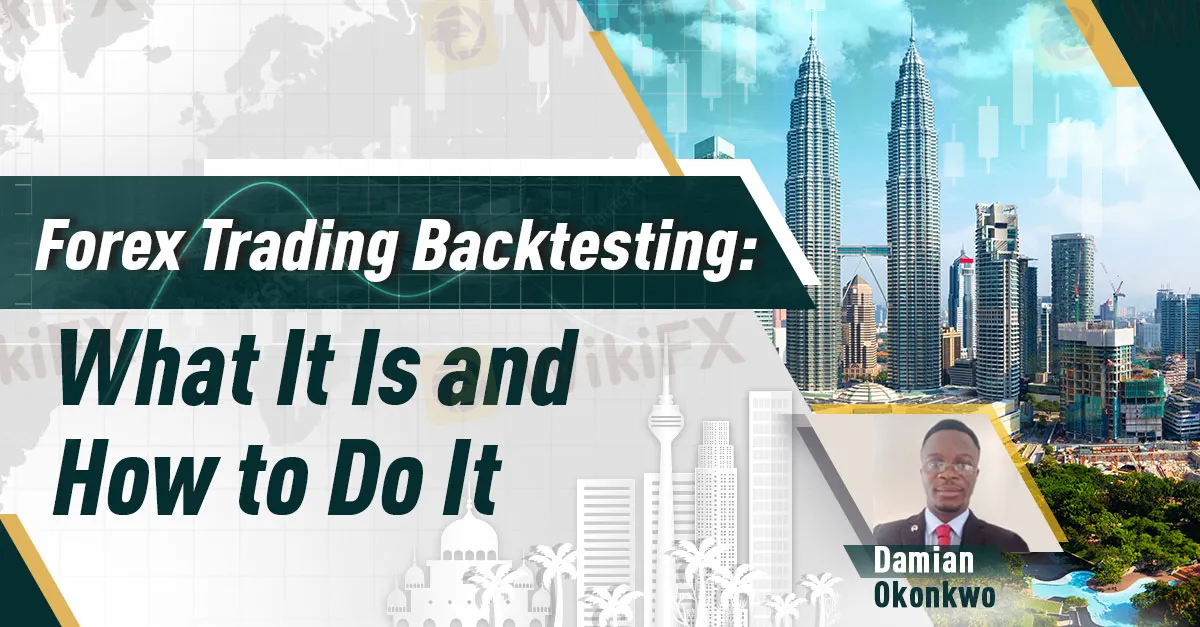简体中文
繁體中文
English
Pусский
日本語
ภาษาไทย
Tiếng Việt
Bahasa Indonesia
Español
हिन्दी
Filippiiniläinen
Français
Deutsch
Português
Türkçe
한국어
العربية
Forex Trading Backtesting: What It Is and How to Do It
Abstract:Forex trading backtesting is an essential tool for traders looking to develop and refine their trading strategies. By analyzing historical data, traders can gain valuable insights into the viability and risk associated with their strategies.


Introduction
Forex trading, also known as foreign exchange or currency trading, is a dynamic and complex financial market where participants buy and sell currencies with the aim of profiting from exchange rate fluctuations. Traders employ various strategies and tools to navigate this ever-changing landscape, and one critical aspect of strategy development is backtesting. This article has examined in detail what you need to know about forex trading backtesting, its importance, and how to effectively conduct it.
What is Forex Trading Backtesting?
Backtesting is the process of evaluating a trading strategy using historical data to assess its potential profitability and risk. In the context of Forex trading, it involves applying a trading strategy to historical price data to see how it would have performed in the past. This analysis helps traders gauge the strategy's effectiveness and reliability before risking real capital in live markets.
The Importance of Forex Trading Backtesting
Backtesting is an invaluable tool for Forex traders for several reasons:
a) Performance Assessment: Backtesting allows traders to assess the performance of their strategies in various market conditions. It provides insights into profitability, drawdowns, and risk management.
b) Strategy Refinement: Traders can fine-tune their strategies based on backtesting results. By identifying weaknesses and strengths, they can optimize entry and exit points, risk management, and position sizing.
c) Psychological Preparation: Backtesting helps traders gain confidence in their strategies. By seeing how a strategy performed in the past, traders can better manage emotions and discipline when executing trades in real-time.
d) Risk Management: Backtesting aids in setting risk parameters. Traders can determine stop-loss levels and position sizes based on historical data to control risk effectively.
How to Conduct Forex Trading Backtesting
To perform effective backtesting in Forex trading, it is crucial to follow these ten steps below:
I) Data Collection: Gather historical price data for the currency pairs you intend to trade. You can find this data from various sources, including your trading platform, data providers, or Forex historical data services.
II) Choose a Trading Platform: Select a trading platform or software that supports backtesting. MetaTrader 4 (MT4) and MetaTrader 5 (MT5) are popular choices due to their built-in backtesting capabilities.
III) Develop a Trading Strategy: Define the trading strategy you want to test. This includes specifying entry and exit rules, stop-loss and take-profit levels, and position sizing.
IV) Set Timeframes: Determine the timeframes you wish to backtest. It can range from minutes to daily or even longer, depending on your strategy.
V) Perform the Backtest: Apply your strategy to the historical data, starting from a specific date and moving forward in time. Monitor the results, including the number of trades, profit and loss, drawdown, and risk metrics.
VI) Analyze the Results: Carefully analyze the backtesting results. Look for patterns, drawdown periods, and any shortcomings in your strategy.
VII) Optimize and Refine: Based on the results, make necessary adjustments to your strategy. This might involve altering entry and exit conditions, refining risk management rules, or revising position sizing.
VIII) Repeat the Process: Conduct multiple backtests over different time periods and market conditions to ensure the strategy's robustness.
IX) Paper Trading: Before trading live, consider paper trading or trading in a demo account to validate the strategy in a simulated environment.
X) Live Testing: Finally, implement the strategy in live markets with a small amount of capital, gradually increasing your exposure as you gain confidence in its performance.
Conclusion
Forex trading backtesting is an essential tool for traders looking to develop and refine their trading strategies. By analyzing historical data, traders can gain valuable insights into the viability and risk associated with their strategies. Remember that backtesting is not foolproof, and past performance is not always indicative of future results. However, it remains a crucial step in the process of becoming a successful Forex trader, helping traders make informed decisions and better manage their trading endeavors.

Disclaimer:
The views in this article only represent the author's personal views, and do not constitute investment advice on this platform. This platform does not guarantee the accuracy, completeness and timeliness of the information in the article, and will not be liable for any loss caused by the use of or reliance on the information in the article.
Read more

Mekness Review: Traders Report Alleged Fund Scams & Account Blocks
Do you witness only fund losses while trading via the Mekness platform? Does the Saint Lucia-based forex broker block your account while earning profits? Haplessly waiting for the support but nothing comes out from the broker’s end? These are nothing new for this forex broker as it constantly receives flak from traders for its illegitimate acts. Broker review platforms are flooded with negative comments from traders. In this article, we will share some reviews of Mekness.

Forex Scam Checker Philippines: Verify Brokers with WikiFX
Protect your investments in the Philippines with WikiFX, the trusted forex scam checker app that helps traders verify brokers and avoid fraud.

MultiBank Group Review 2025: Pros, Cons, and Regulation
Is MultiBank Group the right broker for you in 2025? In the busy world of online brokers, this question matters more than ever. This review gives you a clear, fair, and complete answer by looking at the main parts that matter most to traders. We will check how safe the broker is by looking at its rules from different countries. We will break down its costs and compare account types to show you the real price of trading. Finally, we will look at the trading experience, from how well the platform works to how many different things you can trade. Our 2025 study shows MultiBank Group as a well-regulated broker with good ECN account prices, but it has some weak spots in teaching materials. Our goal is to give you the detailed, expert information you need to decide if this broker fits your money goals and how much risk you want to take.

MH Markets Review 2025: Trading Platforms, Pros and Cons
Selecting the right broker is one of the most crucial decisions a trader can make. The market is full of options, each claiming to have the best platform, the lowest costs, and the strongest security. Finding what really matters through all these marketing activities can be tough. That's why we created this complete mh markets review for 2025. Our research isn't based on fancy brochures but on real testing, deep research, and careful evaluation of features that affect your trading success.
WikiFX Broker
Latest News
UAE Launches Sixth 'Caution' Campaign to Combat Forex and Online Investment Fraud
US and UK Sanction Cambodia-Based Prince Group Over $16B Scam
David Stockman On How The Fed's Money Printing Broke American Industry... And What Comes Next
Forex24 Faces CySEC Fine for Late Compliance Filing
"Our Business Has Died": Texas Services Sector Sentiment Slumps Further In October
One Wrong Move Wiped Out a Government Retiree’s Lifetime Savings
D Prime to Exit Limassol Office Amid Doo Group Restructure
Mekness Review: Traders Report Alleged Fund Scams & Account Blocks
INTERPOL, AFRIPOL Crack Down on Africa Terror Finance
Forex Scam Checker Philippines: Verify Brokers with WikiFX
Currency Calculator




